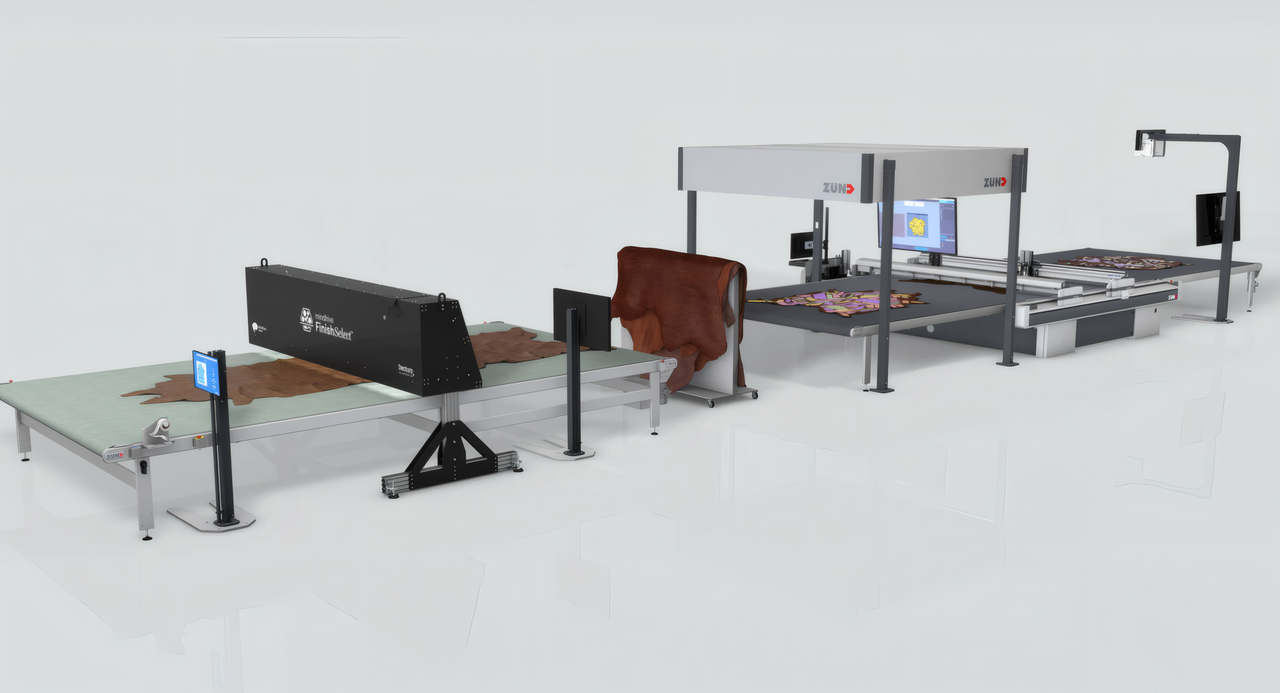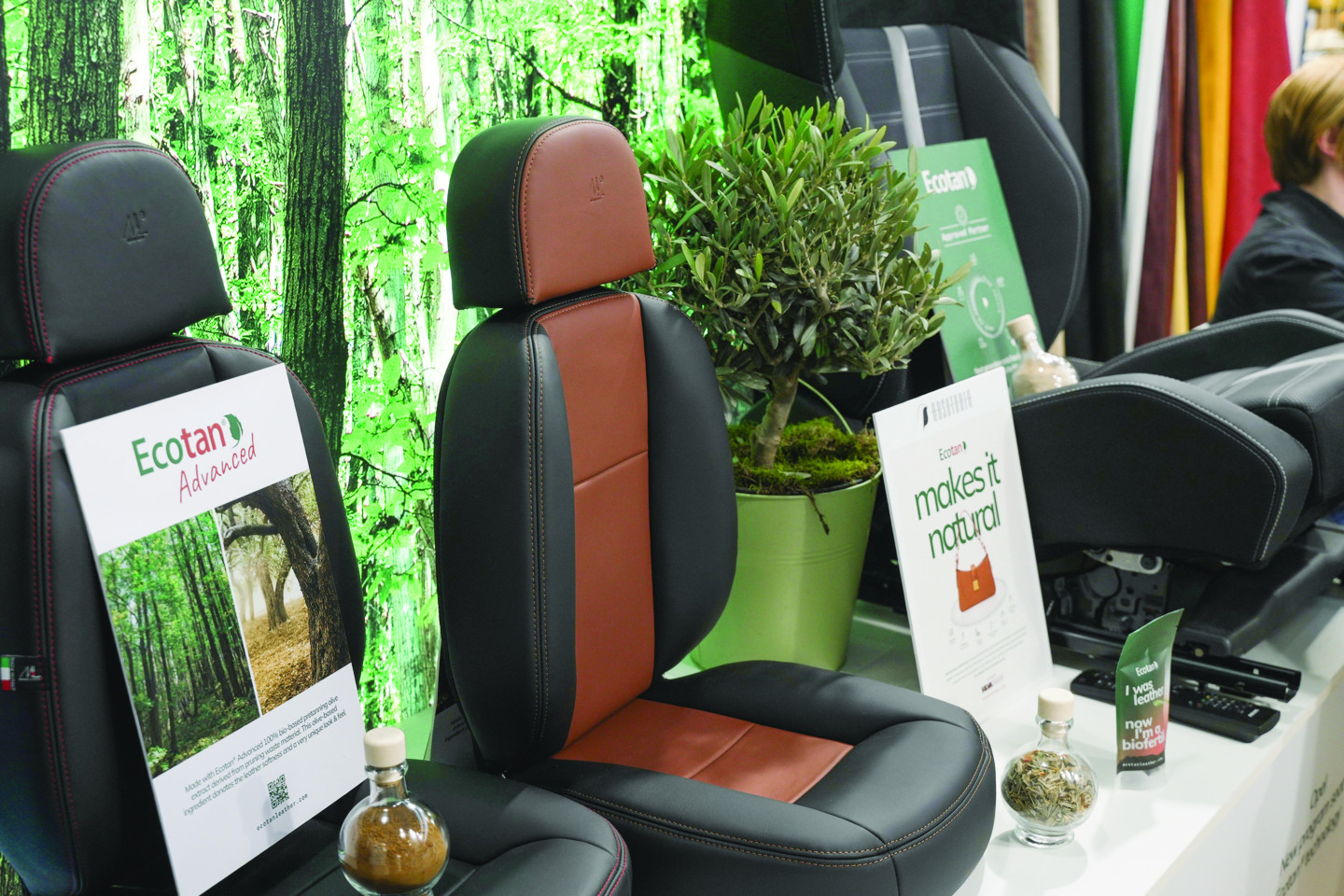
Zünd and partners redefine leather processing
The Swiss company, together with Mind and Mindhive Global, presented the Dectura workflow at Simac, a fully integrated solution for precise and efficient leather cutting.
Keep reading...
Sustainability at wheel: Ecotan® and Stellantis get together to drive the automotive industry towards biocircular materials, CO₂ emission reduction and total recyclability. A necessary revolution that is already on the way.
May 2025

Sustainability in the automotive sector is no longer a side road to be explored in the future, but a four-lane highway that the industry is travelling at ever-increasing speed. At Lineapelle 2025, the key event in the tanning industry, this acceleration was particularly evident. At the centre of attention was the strategic collaboration between Ecotan® and Stellantis, two players who have decided to join forces and expertise to chart a new direction in terms of ecological innovation and circularity of production.
Ecotan®, a 100% metal-free tanning technology developed by Silvateam, is not new to pioneering initiatives. Already known for offering the market a sustainable and ‘Zero-Waste’ alternative, resulting into recyclable leathers that find new life in biofertilizer, compost or biochar, it has captured the interest of automotive giant Stellantis. The collaboration aims to use leather tanned with the Ecotan® system and supplied by JBS-Zenda for the interior of the new Opel Grandland, recently featured in international promotional campaigns.
Gustavo Defeo, Vice-President of CTC Ars Tinctoria, highlighted how Ecotan® tanning technology, developed to create a highly bio-based leather, is a key solution for significantly reducing CO₂ emissions. These are precisely the characteristics that convinced a large group like Stellantis to go down the Ecotan® route, as confirmed by Paolino Giorgio Napolitano, Purchasing Global Lead at Stellantis, who clearly outlined the company’s sustainability goals.
“We have never seen so much effort put into finding alternatives to traditional materials,” said Napolitano. “Our objective is not only to reduce CO₂ emissions through the materials used to upholster a vehicle, but also to extend the lifecycle of these materials by improving their recyclability at the end of their lifespan.”
It was this very vision that led to the creation of the SRM – Sustainable Raw Materials department at Stellantis, which selects and develops environmentally friendly and highly recyclable materials, ensuring their sustainability throughout their entire life cycle.
In addition, Stellantis emphasises a crucial balance between sustainability and cost. Elisabetta Boschetto, Stellantis Polymers & Bio-sourced, Soft Trim Specialist, emphasised how crucial it is to find economically sustainable compromises in order to bring these innovations to the market without placing an excessive burden on the end consumer.
At Lineapelle, Ecotan® presented a complete range of leathers designed to bring sustainable value to automotive interiors: not only seats, but also door panels, dashboards and consoles, developed with prestigious tanneries – such as Mario Levi with the Ecotan® Advanced version, Durli Couros and Eagle Ottawa – or like Rino Mastrotto who presented the B-Foglia and B-Terra collections at the fair. The exhibition of car interior seats from various brands allowed visitors to appreciate at first hand the authentic beauty, naturalness and performance of the leathers, but above all their effectiveness and sustainability. It also made visitors experience first-hand the ‘Made to be Reborn’ concept, Ecotan®’s slogan that perfectly captures the project’s circular mission.
A significant challenge remains, however, overcoming the technical obstacles related to recyclability. As Boschetto pointed out, separating complex materials such as polyurethane from leather is still complicated, but the research effort focuses on these very obstacles and wants to overcome the remaining barriers. The collaboration between Ecotan® and Stellantis is a virtuous example of how such challenges can be met by realising eco-design solutions, through a joint effort, that satisfy both technical and environmental requirements.
But it is not just about technology and materials. This alliance also highlights the need for clearer communication in the sector, avoiding terminological confusion and ‘greenwashing’ practices. Gustavo Defeo recalled the importance of rigorous testing, such as radiocarbon testing, to clearly distinguish what is truly sustainable and what is not.
Ecotan® and Stellantis are not just focusing on new sustainable leathers: they are redefining the standards of the entire automotive industry. In a world seeking radical and concrete changes, this partnership is setting a clear and innovative course.
“The hope is that more and more brands will take this route and be inclined to adopt emerging technologies that promote environmental friendliness,” says Alessandra Taccon, Silvateam BU Leather Sustainable Technologies Business Director. Sustainable leather is no longer just an option: it is the new rule of the game.

The Swiss company, together with Mind and Mindhive Global, presented the Dectura workflow at Simac, a fully integrated solution for precise and efficient leather cutting.
Keep reading...
One of the leading suppliers of PU solutions for footwear manufacturers, Huntsman presented its new SMARTLITE® SCF 280 TPU at SIMAC.
Keep reading...
At SIMAC Tanning Tech 2025, the Group presented new materials, concepts and recycling methods for PU in the footwear industry.
Keep reading...You must login to read this free content
This content requires a subscription to view. Are you already a subscriber? Sign in